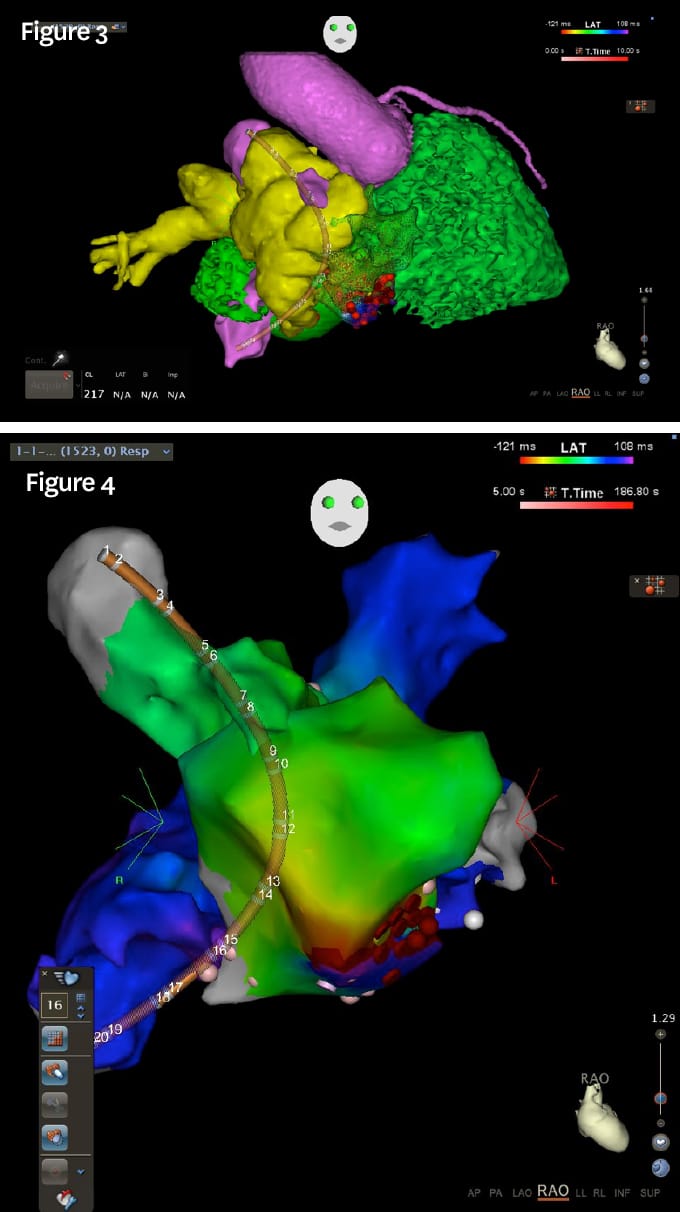
Figure 3: Images from the patient’s cardiac CT study were merged and integrated into the three-dimensional electroanatomic-mapping system, facilitating detailed anatomic and arrhythmia maps during the electrophysiology and catheter ablation procedure.
Figure 4: Arrhythmia and catheter ablation map generated during the procedure. The different colors depict electrical timing sequences during the arrhythmia and the red dots designate the sites of ablation energy delivery for definitive treatment of the arrhythmia.
A male patient currently in his mid-30s was born with D-transposition of the great arteries. As a child, he underwent an atrial switch procedure to physiologically correct the defect. The patient has been followed by his adult congenital heart disease (ACHD) cardiologist at the USC CVTI for several years, during which time he has been receiving treatment for heart failure and significantly reduced systemic right ventricular function. The patient also has comorbidities that include obstructive sleep apnea, obesity, hypertension and hyperlipidemia.
Patients living with ACHD are surviving longer, reaching ages where they develop standard age-related comorbidities. In addition, ACHD patients often are more sedentary than their peers, as they frequently self-limit physical activity, further leading to the development of other cardiovascular comorbidities.
In late 2016, the patient developed intra-atrial reentrant tachycardia (IART), at which point he immediately was admitted to the hospital, where he underwent evaluation, medical treatment and electrical cardioversion to restore normal rhythm.
After thorough discussions regarding various approaches to arrhythmia treatment, the decision was made to pursue a catheter ablation procedure. The patient was relatively young and preferred not to take anti-arrhythmic medications because he was concerned about the side effects, making catheter ablation a more preferable option.
To prepare for the procedure, the patient underwent a highly detailed cardiac CT scan. The arrhythmia specialists at Keck Medicine of USC, which included an ACHD-certified electrophysiologist, were able to integrate the CT images with the latest electroanatomic-mapping software and intracardiac ultrasound during the procedure to create a detailed picture of the patient’s cardiac anatomy and the exact pattern of IART that the patient experienced (Figure 3). This allowed the physicians to perform very precise ablation of the arrhythmia substrate, even in the context of complicated cardiac anatomy (Figure 4).
The interventional electrophysiologists needed to use a special puncturing technique to access the targeted substrate for ablation due to the patient’s underlying congenital heart condition and past surgery. Catheter ablation of the patient’s IART was successfully performed, and he was hospitalized for one night before returning home the following day.
Our ACHD experts carefully evaluate and manage the range of conditions unique to ACHD patients and provide tailored treatment options and ongoing support.
Cardiac procedures can carry much higher risks and be more complicated in adults with congenital heart abnormalities. Keck Medicine of USC offers unique expertise for these procedures with dedicated, board-certified ACHD experts and an integrated-care model combining specialties, including electrophysiology, interventional cardiology, advanced cardiac imaging, cardiac anesthesia and adult congenital cardiac surgery. Our ACHD experts carefully evaluate and manage the range of conditions unique to ACHD patients and provide tailored treatment options and ongoing support.